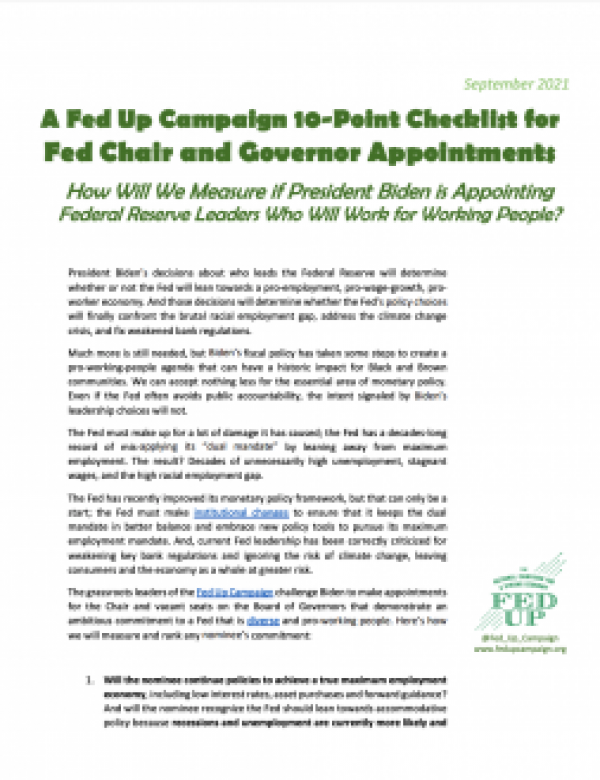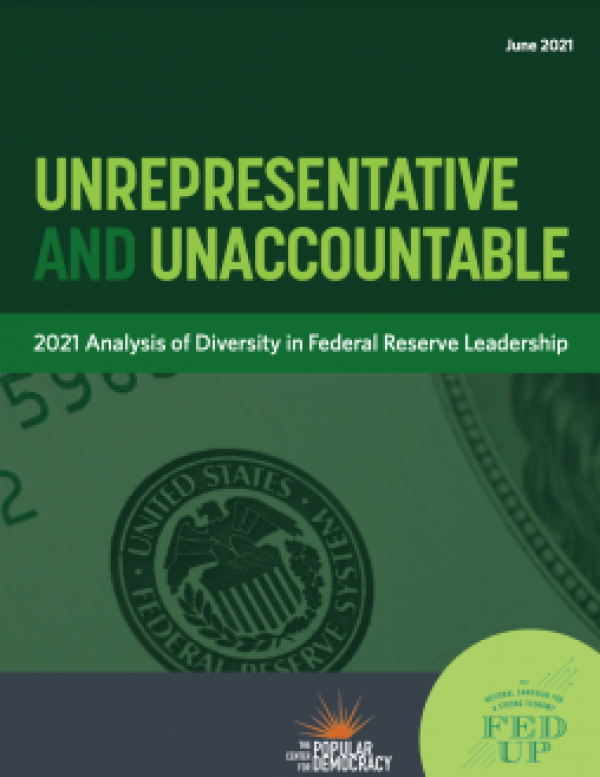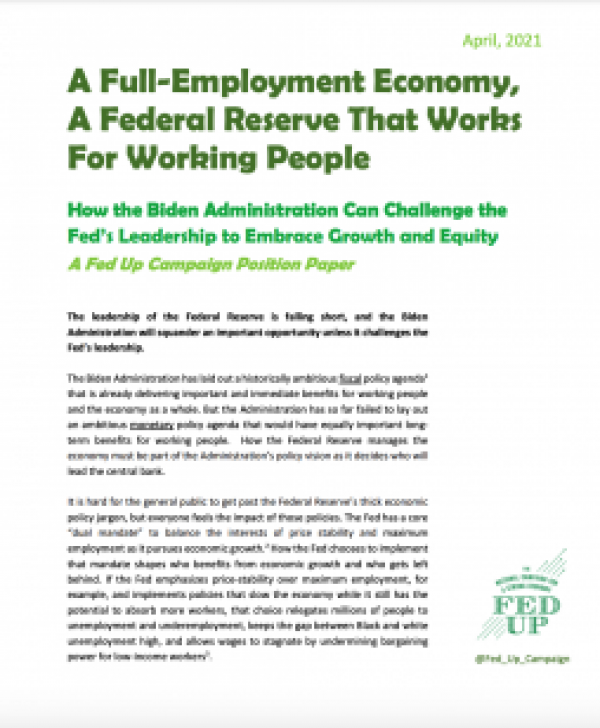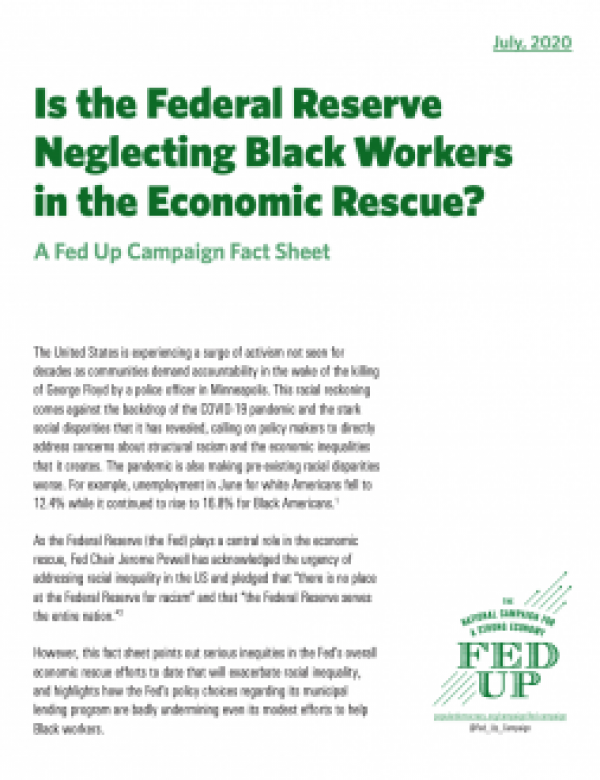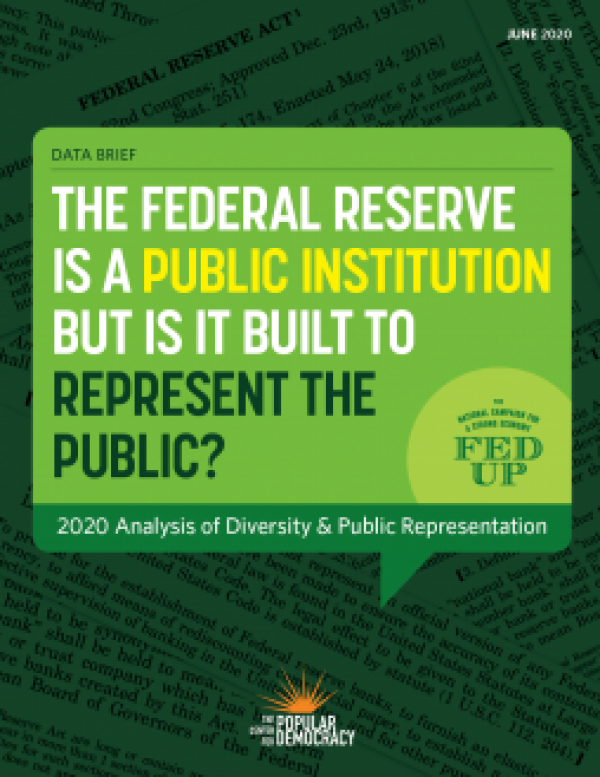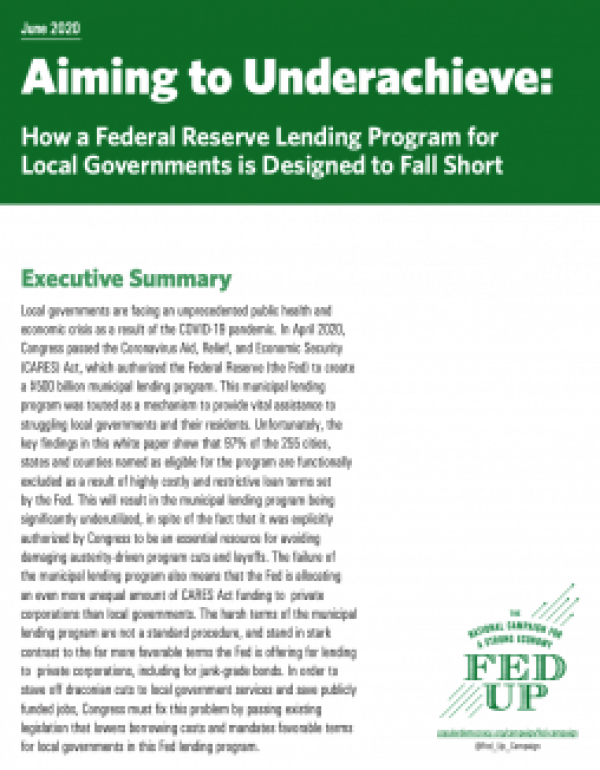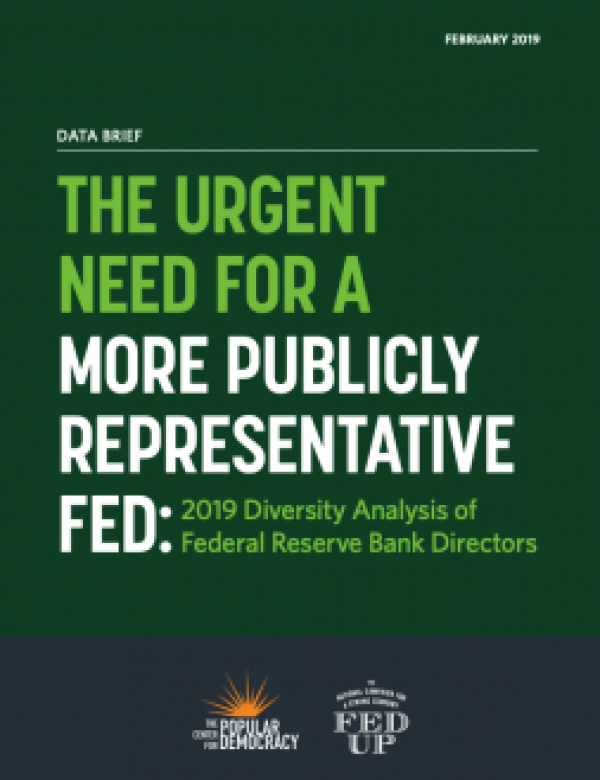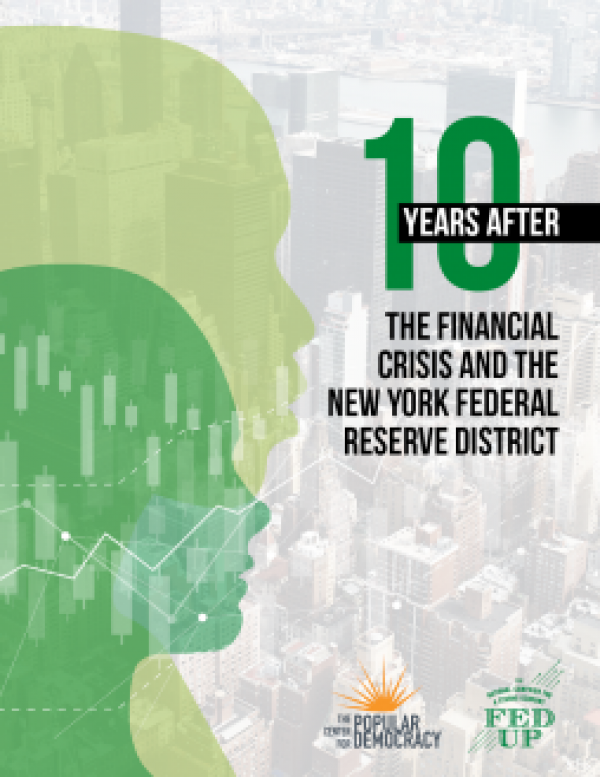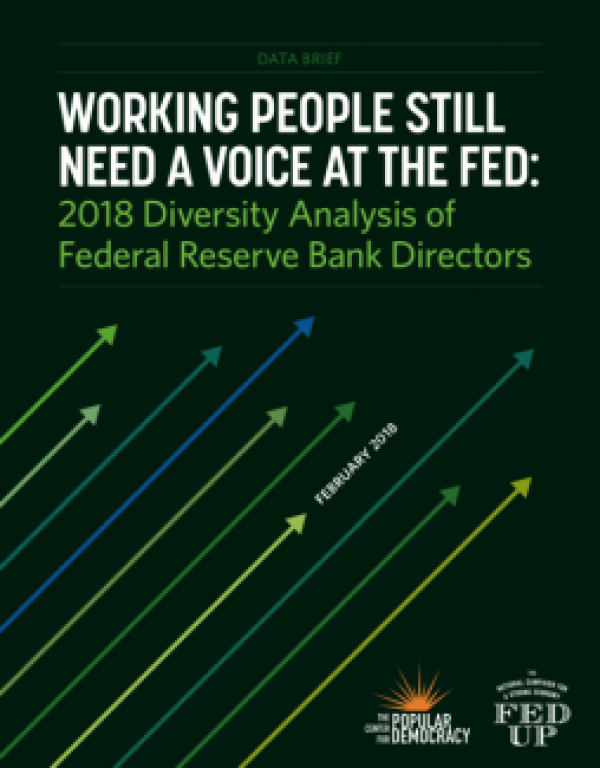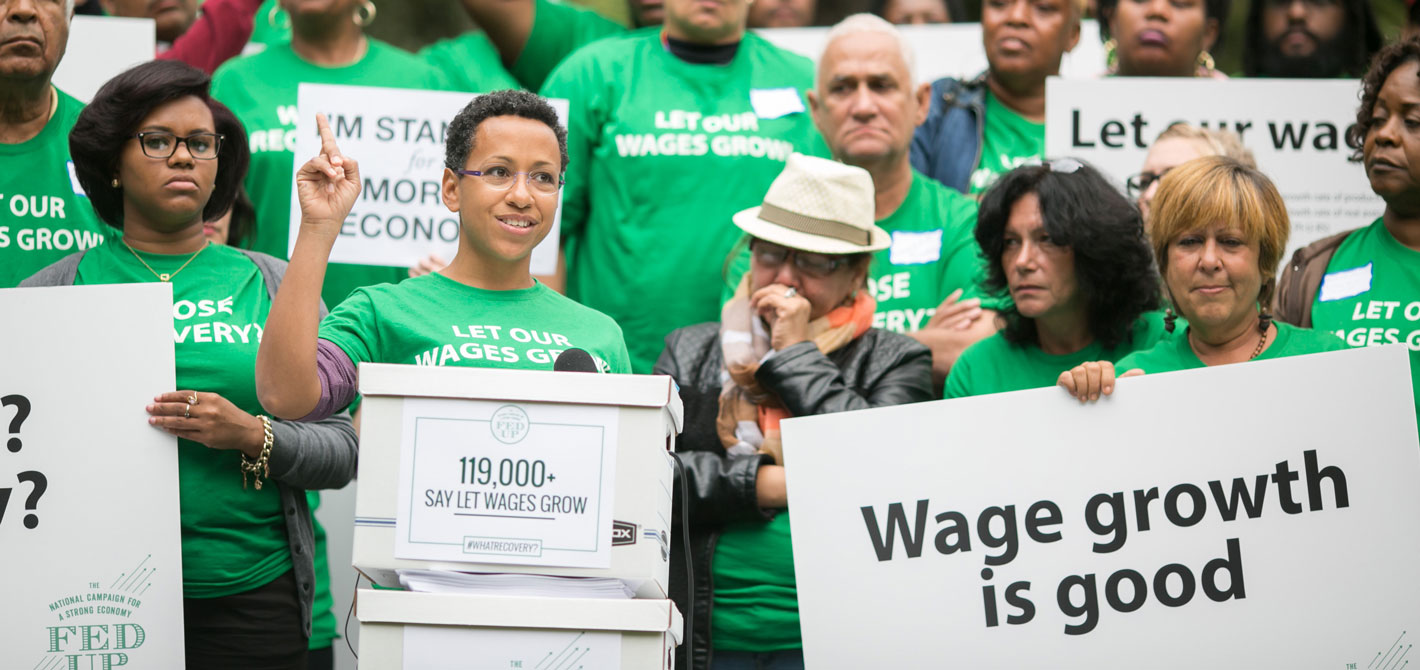
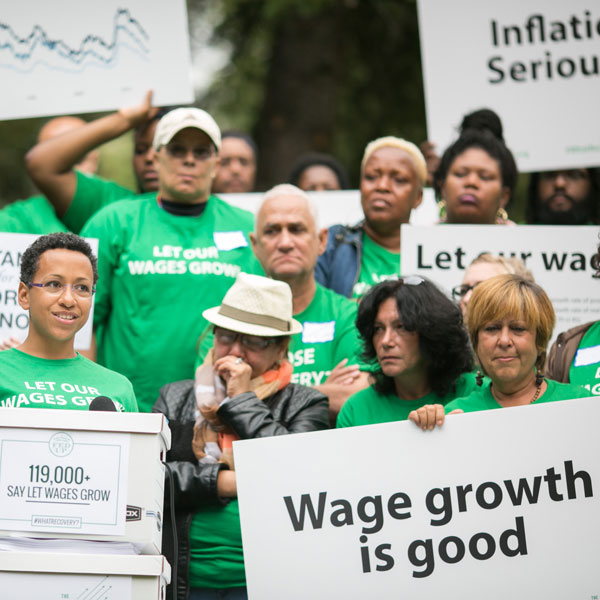
Building a National Campaign for a Strong Economy: Fed Up
We are Fed Up!
By keeping interest rates low and prioritizing genuine full employment, the Federal Reserve is giving the economy a fair chance to recover and allow wages to grow across all communities.
The Federal Reserve has tremendous influence over our economy. Although our communities continue to suffer through a weak recovery and growing economic inequality, corporate and financial interests are demanding that the Fed put the brakes on growth to keep wages down.
Organized by the Center for Popular Democracy, the Fed Up campaign brought together, for the first time, 70 non-...
By keeping interest rates low and prioritizing genuine full employment, the Federal Reserve is giving the economy a fair chance to recover and allow wages to grow across all communities.
The Federal Reserve has tremendous influence over our economy. Although our communities continue to suffer through a weak recovery and growing economic inequality, corporate and financial interests are demanding that the Fed put the brakes on growth to keep wages down.
Organized by the Center for Popular Democracy, the Fed Up campaign brought together, for the first time, 70 non-profits, community-based organizations, and unions representing millions of people from every region of the United States to call upon the Federal Reserve to engage with the people whose lives are deeply impacted by its policies.
Fed Up has created a process for people’s organizations to have their voices heard at the Fed, and to demand that it take its mandate for full employment and decent wages as seriously as it takes its growth mandate. In addition, Fed Up has advocated for more diversity on local and national Federal Reserve boards so that they represent workers primarily, rather than economists and corporations.
Our coalition has come together because the Fed needs to hear our voices. The Fed’s job is too important for us to let bankers and financial interests dominate the conversation.
The Fed’s priorities should support full employment and creating space for healthy wage growth:
-
In the short run, the Fed should keep providing support to economic activity and jobs.
-
In the longer run, the Fed should use regulatory powers, not higher interest rates, as the primary tool to rein in the speculative excess that leads to disastrous bubbles.
facts & figures
The Fed’s priorities should be spurring full employment and creating space for healthy wage growth.
- In the short run, the Fed should keep providing support to economic activity and jobs until we reach a genuine full recovery from the Great Recession. At a minimum, this means keeping short-term interest rates low until wage growth is in line with the Fed’s overall inflation targets and the labor market is back to pre–Great Recession health.
- In the medium run the Fed should:
- Realize that even the pre–Great Recession labor market was far from healthy and continue to spur the economy to push unemployment down until—but not before—accelerating inflationary...
- In the short run, the Fed should keep providing support to economic activity and jobs until we reach a genuine full recovery from the Great Recession. At a minimum, this means keeping short-term interest rates low until wage growth is in line with the Fed’s overall inflation targets and the labor market is back to pre–Great Recession health.
- In the medium run the Fed should:
- Realize that even the pre–Great Recession labor market was far from healthy and continue to spur the economy to push unemployment down until—but not before—accelerating inflationary pressures reliably emerge in the data.
- Target nominal hourly compensation growth to be at least two percentage points greater than 1.5 percent trend productivity (meaning roughly 3.5 percent).
- In the longer run, the Fed should use regulatory powers and not higher interest rates as the primary tool to rein in speculative excess that leads to disastrous bubbles.
There is still substantial slack in today’s economy and labor market, slack that Fed policy can help reduce.
- The employment-to-population ratio of prime-age adults has recovered only a third of the decline from the pre–Great Recession labor market peak.
- We still have a huge jobs hole: Employment is still 6.6 million below what is needed to return to the labor market health that prevailed in December 2007.
- This labor market slack is due to a continued shortfall of aggregate demand. GDP in 2013 still fell 4.5 percent below estimates of potential GDP, and even this “output gap” is one that has improved in recent years not because of strong real-world economic growth, but simply because estimates of potential GDP have been marked down, essentially defining “economic recovery” downward.
- When there is such slack in the economy, workers with fewer formal educational credentials, minority workers, and non–college-educated workers are hardest hit. For instance, roughly one in five blacks and one in six Hispanics are currently unemployed or underemployed. Similarly about one in six workers with only a high school degree are unemployed or underemployed.
There is a lot at stake
Slowing the recovery in the name of combatting hypothetical inflationary pressures would leave millions in considerable and unnecessary economic distress and would exacerbate troubling longer-term trends in wages and incomes for the vast majority of American workers and their families.
- Failure to lower long-term unemployment, currently a historically high 2.0 percent of the labor force, or bring back into employment the millions who have left or failed to enter the labor force means lost incomes and output and possible permanent scarring of those affected and of the economy. Given stagnant wages for most of the last four decades, cutting short the recovery means failing to restore broad-based wage growth, diminish poverty, lower inequality, and restore lost living standards.
- Many communities still face high unemployment and, even with a national unemployment rate of 4 percent, would still experience recessionary levels of unemployment. A full recovery is essential for any possibility of income growth in these communities.
- Achieving full recovery such as an unemployment rate of 4 percent would mean black unemployment would drop from over 11 percent now to a lower but still high unemployment rate of 7 percent. Nearly a third of young black men ages 20–24 are out of work and out of school, up from a fifth before the recession. Failure to dramatically reduce this non-employment will exclude this population from our economy in the future.
Inflation is well under control but wage growth is disappointingly slow.
- Inflation, according to the Federal Reserve Board’s preferred measure, is running at 1.6 percent, below the target 2 percent rate, and has been below that 2 percent rate for most of the last six years. Federal Reserve Board staff expect inflation to remain below 2 percent over the next few years.
News
News
FOR IMMEDIATE RELEASE July 8, 2021
CONTACT press@populardemocracy.org
...FOR IMMEDIATE RELEASE June 16, 2021
CONTACT press@populardemocracy.org
...02.11.2020
WASHINGTON -- Today, ahead of the...
Of course, Powell did not get to this place on his own. There was a concerted effort by the Fed...
Of course, Powell did not get to this place on his own. There was a concerted effort by the Fed...
But it has long faced external pressure to keep rates low. Fed Up, an advocacy group started in...
Yellen nonetheless came in for some heat over it. Activist groups like Fed Up were beginning to...
“I think [Powell’s remarks] are a real vindication,” says Connie Razza, the chief of campaigns...
03.25.2019
WASHINGTON, D.C. -- In response to President Trump's...


